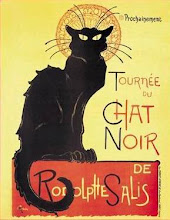In my recent fashion transition and reflections, one of the main issues that kept surfacing was my thoughts on Danish fashion and how it compares with the rest of the world (read: mainstream). This of course, is a very general statement as Danish fashion can be mainstream and every fashion capital has its own fashion signature.
When I first encountered Danish fashion (not to be confused with Danish design, which refers to the Dane’s renowned eloquent furniture / home design), my first impression was amused. Then followed by dislike and aversion towards certain styles that clashed with what I considered as tasteful or chic. But to my utter surprise, years later (after some major conditioning and brainwashing) I found myself appreciating and even wearing styles that I openly criticized before. I guess it’s a bit like meeting a new culture or fitting into a new team. First there’s the encounter (Forming), then there are clashes (Storming), then you start to learn and appreciate the new things (Norming), and lastly, you’re so conditioned to the new style that you start adopting it yourself (Performing, voila!). In my case, I’m embracing the Danish fashion like I never would’ve imagined 4 years ago.
Curious fact: the point when I knew for certain that I have crossed to the “dark” side was when I actually considered buying BLACK socks to go with my gym trainers.
Danish fashion has a very distinct style of its own. Some locals claim that it has inspired fashion trends in the rest of the world (this is where people from other fashion capital, like
However, being unique in a business that’s undeniably driven by mainstream forces has its cons. The recent financial showdown acted like a giant broom that came and swept everyone away. Those who were strong hung on, while the rest as we know are history. OK, that was a bit dramatic; several strong-willed ones are still hanging on but barely. It was a major shake up that slapped the reality of how money IS everything, even for artists. To create art, you need to money. To make money, you need to create things that sell. Being uniquely Danish (read: appealing exclusively for Danes) as fashion is here, I’ve always pondered whether that’s a good thing for them. Being a small country of not more than 6 million people (fun facts: there are 24 million pigs in the country), the fashion industry has a very small market to thrive on. To be successful, one must look abroad.
Recently, I ran casual survey among friends, asking them if they could name a Danish fashion designer or any Danish clothing label that is successful internationally. You try.
Precisely. It is debatable whether it is important to be internationally renowned, but when you start something in a highly competitive industry such as fashion, and in a market where your target group derives from a pool of 5 million people, you should instinctively be compelled to look beyond borders – literally outside the box.
The Danish fashion industry needs to stop trying to be the world’s best kept secret. More visibility needs to be created and they can start by delivering more (and this is where all artistic people are going to shoot me) commercial pieces. Create a balanced collection that offers commercial pieces that will sell and support the more exclusive, more avant-garde pieces. Simply put – creating designs that can translate into money, money that will fuel their work and ultimately the fuel fire of their passion.
Another suggestion is to understand and respect your consumers’ buying power. The past 12 months have taught us that expensive haute couture probably isn’t the best strategy at the moment, as Christian Lacroix and Escada have sadly shown us. It’s no secret that many fashion houses do not make profits. But it isn’t romantic anymore to be a luxurious but poor brand; instead, it’s savvier to be a label that hits the right note on key trends and with prices that encourage your consumers to do what they do best – buy!
I love Danish fashion and appreciate its adventurous styles and laid back attitude. Which is even more the reason that I want it to thrive and bring more of its fun, quirky designs to the rest of the world.




1 comment:
Interesting post, was quite intrigued to see the underlying acceptance of a new culture.
Ever since I have moved back to Australia, I've started to spot Danish styles/nuances to the way Aussies dress. There's a few people that I swear dress exactly like Danes... unless of course they are Danes! Perhaps you should come to Australia and see for yourself *hint hint*
Post a Comment